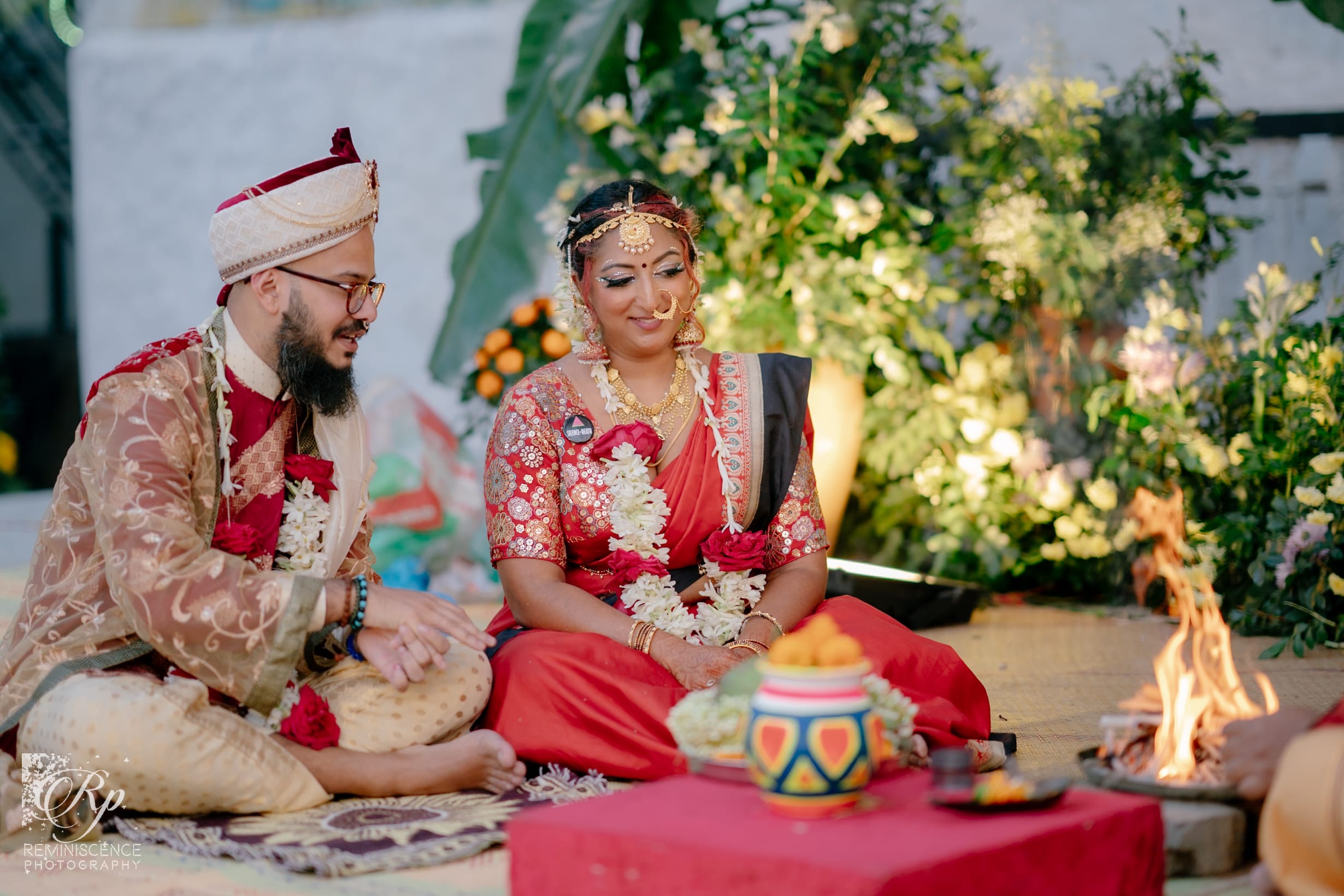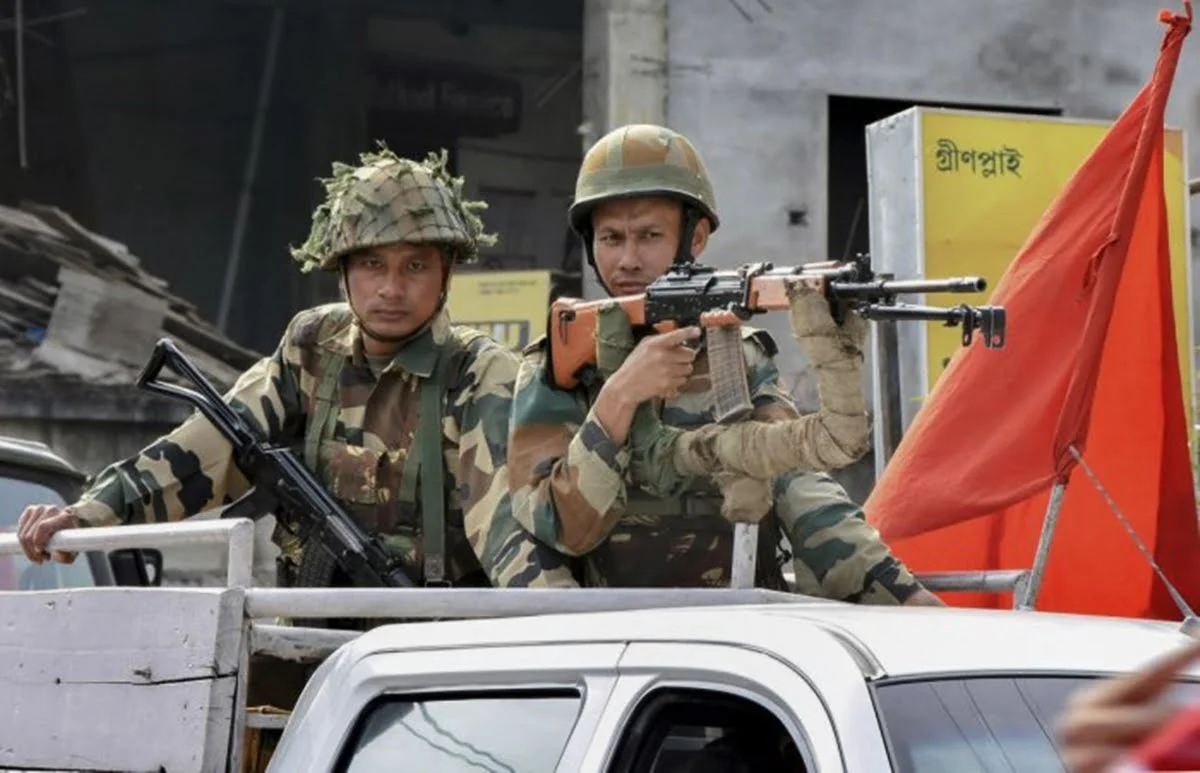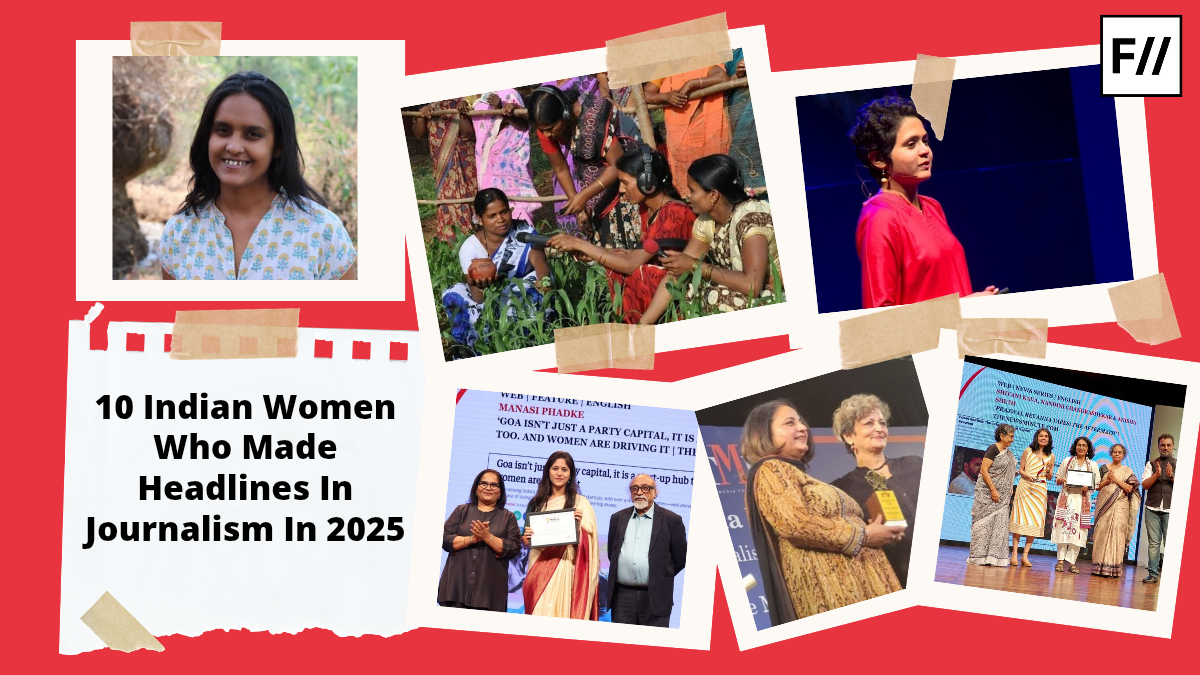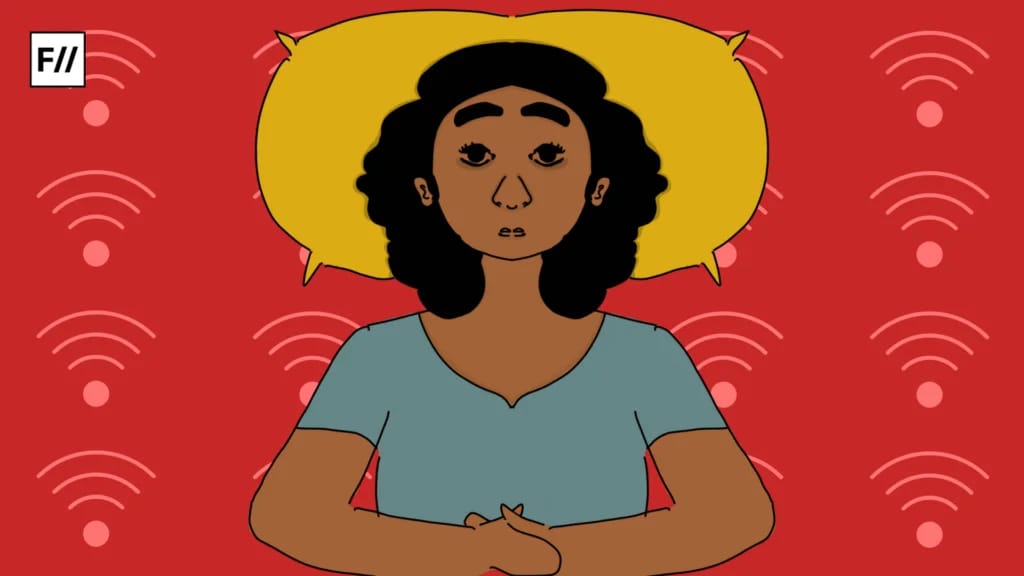On a sunny December day in Dhaka, Bangladesh, seventy guests gathered to witness my partner and my “Hindu-ish” wedding ceremony. We sat under a mandap of marigold, jasmine, shapla, and banana leaves, symbolically uniting our Bangladeshi and Kannadiga heritage. But my partner and I don’t believe much in marriage, monogamy, or organised Hinduism in its nationalistic form. So why did we do this at all?
Dissident queer beginnings
Imran and I met in London in September 2019, at a university “campaigns fayre” connecting new students to veteran activists. Imran – then a PhD student – and a colleague were staffing the booth for “Justice for Workers,” a campaign pushing for fair wages and just working conditions for our university’s mostly-migrant and largely-Spanish-speaking cleaners, caterers, security, and other support staff. I had supported similar organising while in college in the US, and since then, I had worked as a community organiser across the US, India, Mexico, and beyond. I was excited to meet another diasporic South Asian with similar values, and who, like me, organised in Spanish and with people from varied backgrounds.
While Imran takes a slightly different form, identifying as genderqueer and connecting with both masculine and agender presentation, our shared activism drew us together.
Just before arriving to London for my Masters, I had set a joking intention with friends: I was moving to the UK to find my queer, leftist, South Asian wife. While Imran takes a slightly different form, identifying as genderqueer and connecting with both masculine and agender presentation, our shared activism drew us together. So did our mutual preference for polyamory over the “relationship escalator” to monogamy, marriage, and the nuclear family. We spent London’s COVID-19 lockdowns together, and our relationship blossomed. But when I was offered a funded PhD in South Africa to research diasporic queer South Asian activism, we knew that to live together again, due to our different citizenships, we would likely have to legally marry.
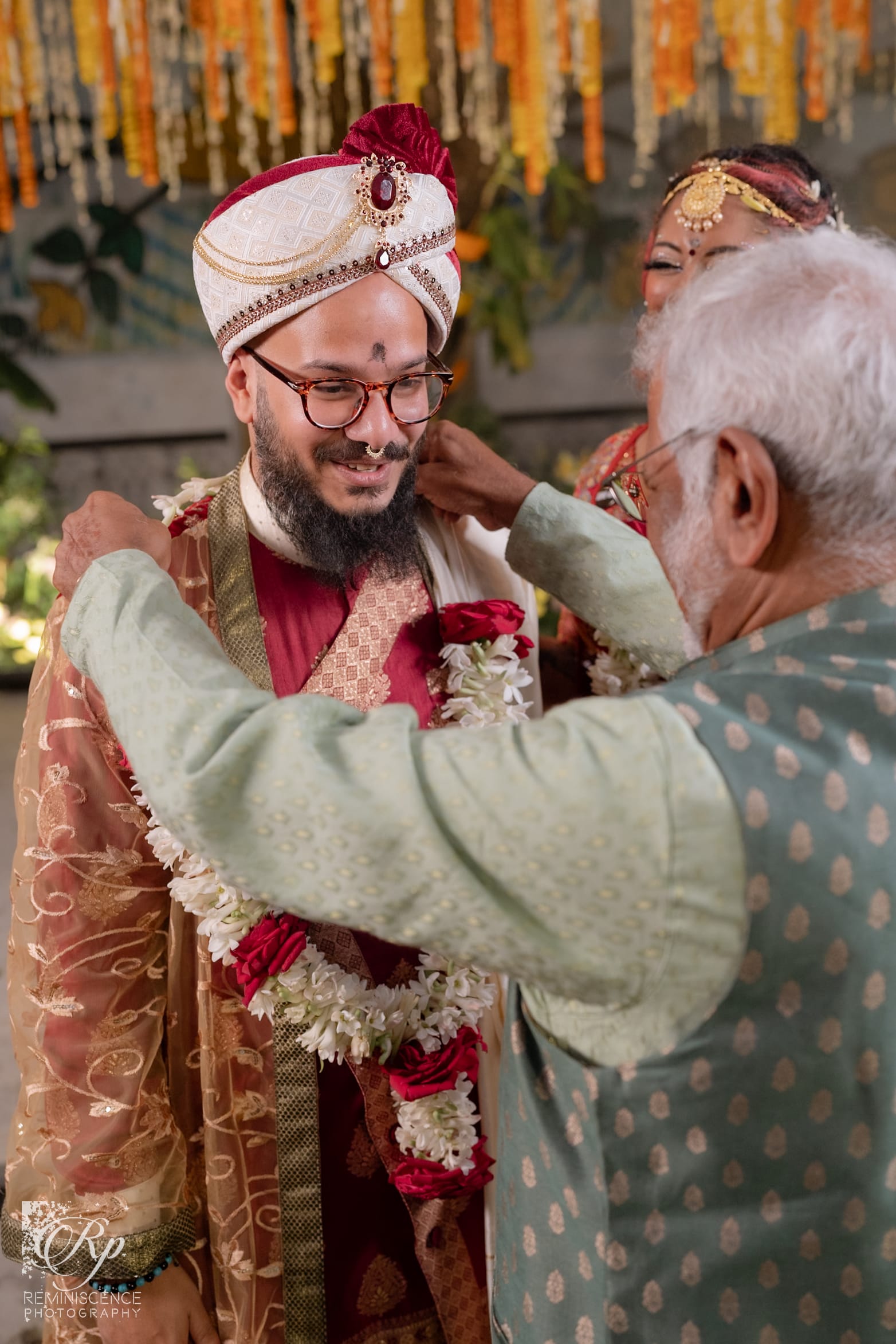
We signed legal marriage papers in South Africa in January 2024 and in the US in May 2024. But to honor Imran and their family’s Muslim faith, we also decided to perform a nikkah – an Islamic marriage – in August 2023, while visiting Imran’s family in London. My mother and aunt joined in celebration, but I sensed that they too would find it powerful to see us conduct rites in my family’s own traditions.
Caste apartheid, patriarchy, love jihad, and complicating Hindu wedding rites
For me, going through the Hindu rites felt complicated. Anti-“love jihad” gangs wield violence, disrupt Hindu-Muslim weddings, and worse, across India, including in my native Karnataka. But conducting Hindu rites felt like it could perhaps rebut Islamophobic tropes about forced bridal conversions. My concerns went deeper: my family holds caste privilege, and Ambedkarite politics argue that Hinduism is inseparable from casteism, eschewing pheras for Buddhist, civil, or other non-Hindu wedding traditions.
I – and my ancestors – have attempted allyship with caste abolitionist movements for decades, and I didn’t want to pinkwash casteism and Hindu nationalism with shallow queer and interfaith visuals. I also wasn’t interested in rites that marked women as property transferring from one male owner to another.
And hosting a lavish reception felt deeply wrong while genocide raged in Palestine, alongside ongoing imperialist violence in Kashmir, Sudan, Congo, Haiti, and beyond. But I wanted my family to feel as connected to the processes sanctifying our love as Imran’s family did. And I felt a conflicted attachment to circling the agni like my ancestors had for generations.
So, inspired by friends, mentors, and onlinenarratives, Imran and I designed our own rituals to host more safely in Dhaka.
So, inspired by friends, mentors, and online narratives, Imran and I designed our own rituals to host more safely in Dhaka. We met with a pandit over a year to workshop the rites. On the day of, we shared our tensions with negotiating feminist and queer politics and interfaith and queer love within Hindu rituals, and explained how the rites would differ from traditional Kannadiga or Bangladeshi Hindu ceremonies.
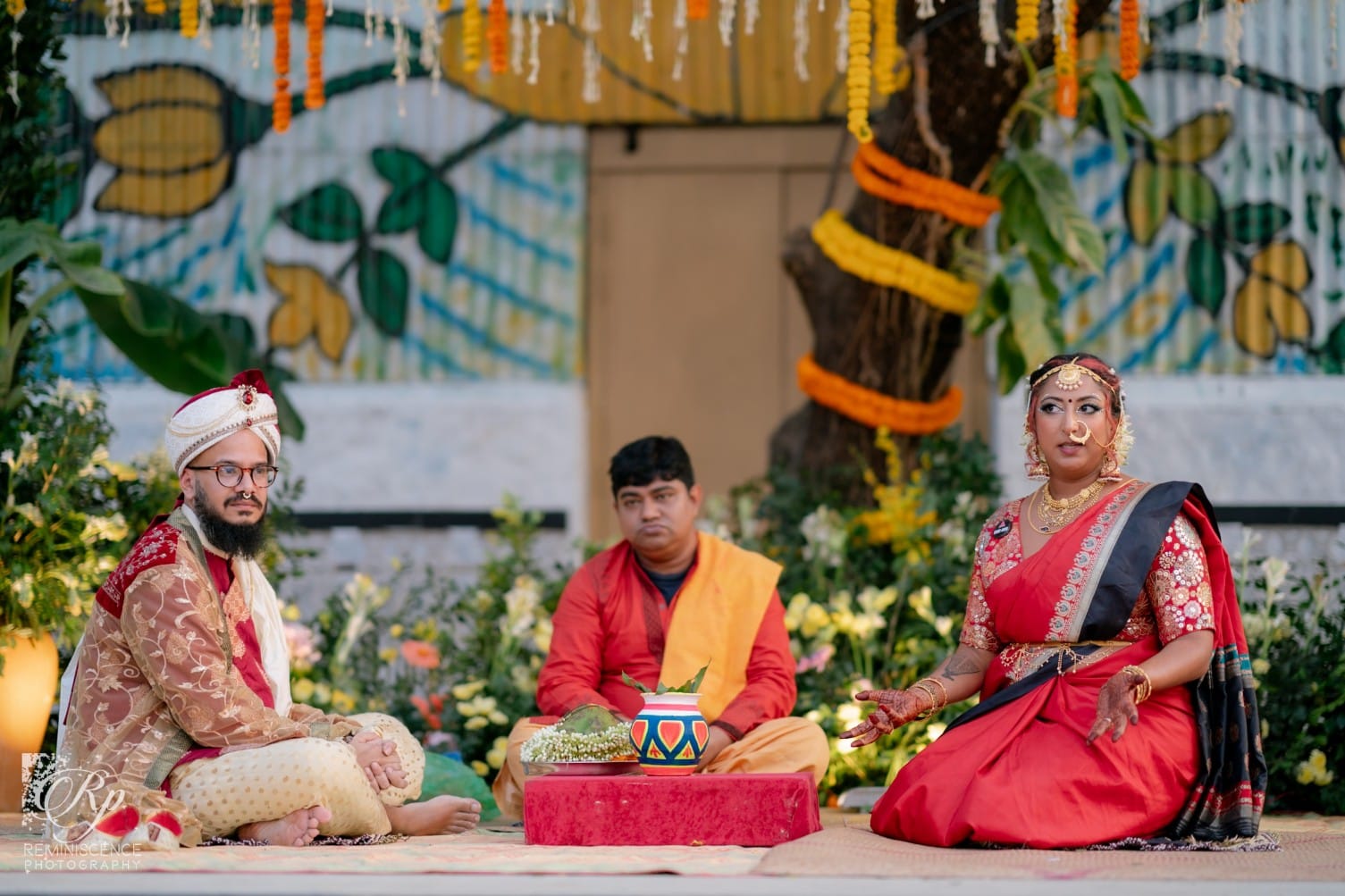
We began with self-written vows that rejected monogamy and heteronormativity, and instead celebrated our love in community towards liberation. We then read Periyarite self-respect vows, designed by Dravidian, Dalit activists as an anti-caste and feminist alternative to traditional pradakshana: ‘In all of life’s joys and troubles, we swear to share equal responsibility and equal entitlement and right, living as firm friends and companions. Whatever privileges you have the right to expect of me in our future, I have equal right to expect the same of you.‘
A Hindu-ish wedding ceremony reflecting our politics
After our vows, our Hindu-ish rites began. For the officiant, we had explored having women, nonbinary, and queer friends with anti-caste politics but knowledge of Hindu rites lead the rituals, as we wanted to reject caste supremacy mediating connection to the divine. We also reached out to feminist, queer, and women pandits, but capacity limited these options. We ultimately chose a Kali pandit from Dhaka for his connection to divine feminine rage and his availability to work with us on the rites.
We initially wanted to conduct the wedding ceremony in English, as access to Sanskrit has been historically limited through casteist violence. But since our pandit primarily spoke Bangla, the rites were conducted in Bangla and some Sanskrit, with English explanations for guests.
We used only our first names, attempting to reject casteist violence and affirm solidarity with Dalit, Bahujan, and Adivasi community, and we removed all mention of gothra or caste, though my family’s unavoidable caste privilege remains.
We used only our first names, attempting to reject casteist violence and affirm solidarity with Dalit, Bahujan, and Adivasi community, and we removed all mention of gothra or caste, though my family’s unavoidable caste privilege remains. We omitted the kanyadaan and all rituals lionising the groom or indicating that one partner was being given by a male family-member to another man’s family, and we only invoked Kali as a form of the divine, a goddess I feel comfortable worshipping due to her pre-Hindu and Adivasi histories.
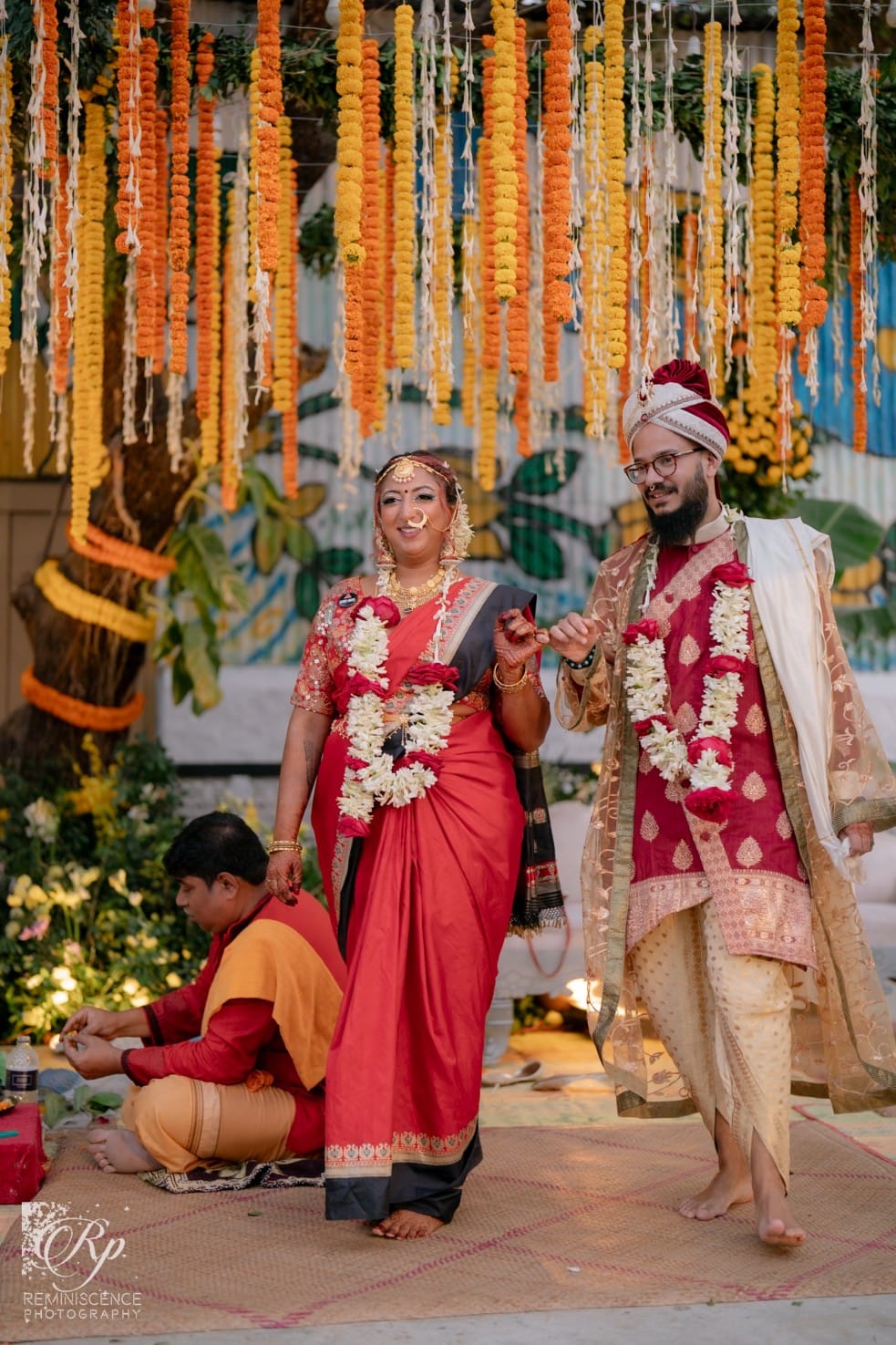
The entire religious ceremony of the wedding was pared down from hours to thirty minutes. What remained was an opening puja to Kali; walking around the agni; mutually exchanging symbols of our love; and tying our pallus and breaking a coconut to auspiciously begin our next stage together. Imran and I circled the agni side by side, rather than one after the other, and we both traded garlands. And when Imran tied a mangal sutra on me, I gave them a jade ring, symbolising our equal exchange as consenting adults. Our families joined us only at the end to garland and welcome us both.
Like all Hindu weddings, it didn’t all go to plan. The pandit worried about the mandap’s charpois catching fire, so he doused the agni out early. The ceremony was disrupted by a phone call to the pandit – who, in true Desi form, actually answered. And the pandit forgot to tie us, so I did the pallu tying. But these mishaps all felt like affirmations of our “Hindu-ish” gathering, one that reflected us as full humans, flaws and all.
At the rites’ end, when my father came to garland us, I asked for his impressions. A bit bashfully, he told me, ‘well, all Hindu weddings are chaotic – but yours was a lot more fun than mine.‘
Why (Hindu-ish) marry at all? Post-rites reflections
Designing the ceremony in this way took significant labor, from us and from community-members. It would have been easier, and perhaps more coherent, to cut the Hindu rituals altogether. Prior to the wedding, student uprisings in Bangladesh overthrew the governmental dictatorship and caused us to consider cancelling. This also triggered an outpouring of false news in India about anti-Hindu violence, which spooked many of my family members, further threatening the wedding. But my father’s words made it worth it.
Hosting allowed us to platform femme, queer, and trans vendors and friends, like our décor team, cake baker, entertainers, and the sustainable fashion label who created our clothes and customised gifts for our guests.
Reactions from friends and family also affirmed this. Hosting allowed us to platform femme, queer, and trans vendors and friends, like our décor team, cake baker, entertainers, and the sustainable fashion label who created our clothes and customised gifts for our guests. We opted for vibrant local products over the trending white wedding aesthetics and worked to reduce waste and plastic usage.
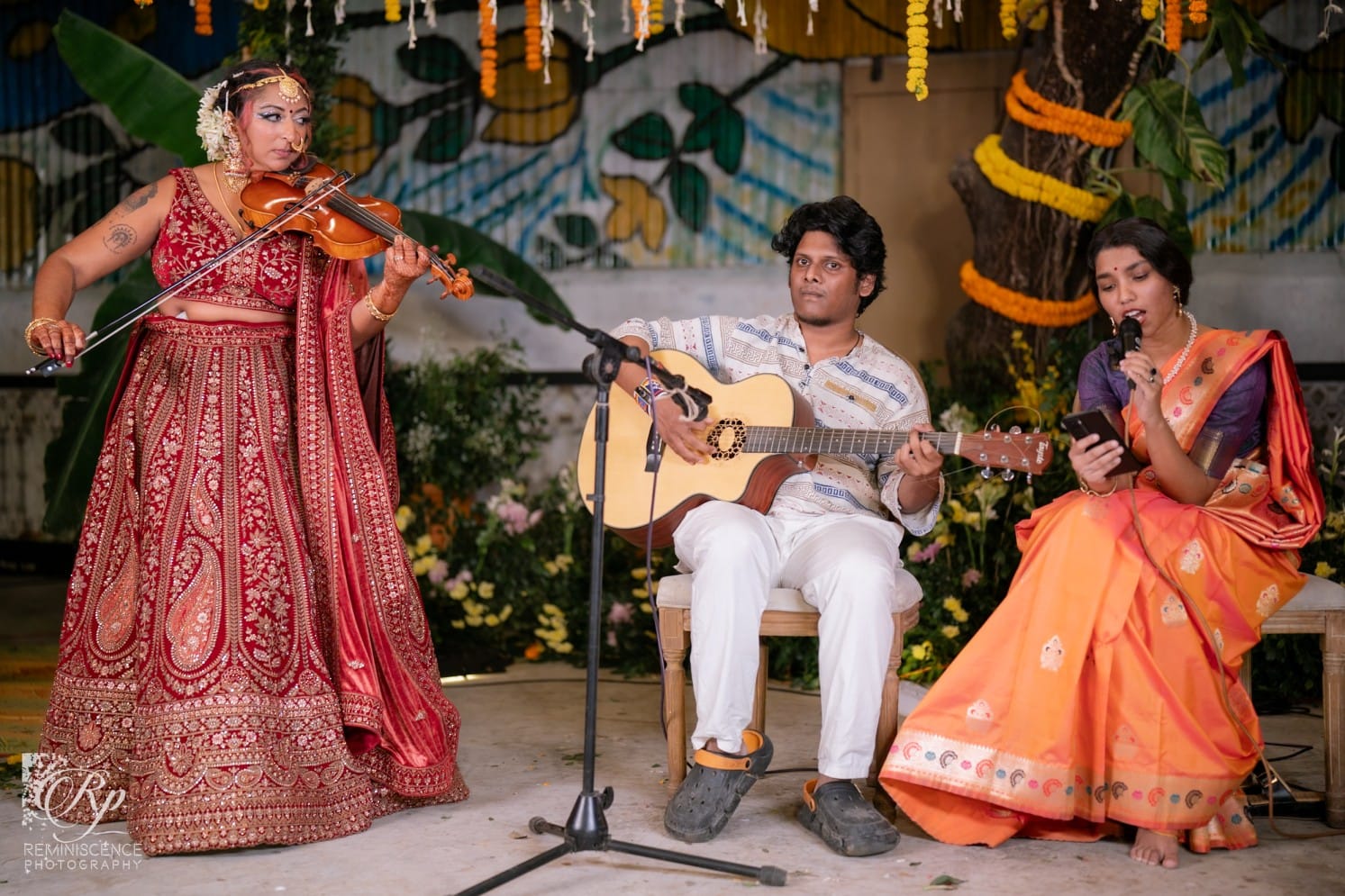
We chose our makeup artist for her stance against colourism. I got to perform alongside amazing musicians who are also activists. Our friend blessed us with beautiful choreographed dances that affirmed trans femininity. Our all–femme, nonbinary, and queer DJ team curated a defiant global mix of amapiano, Bollywood, old-school R&B and hip hop, and Latin American dance that everyone broke it down to. And our dress code was “colorful, fabulous, and queer AF.” Many friends shared that was the first wedding where they could attend as their full queer and trans selves. That was what it was all for.
After the reception and a whirlwind trip visiting family across India, Imran and I received our wedding photos and shared some online. In response, several community members asked me how we had aligned the Hindu rites with our politics and identities. I’m still conflicted about following Hindu traditions while standing against caste violence, Islamophobia, and patriarchy. But our experience shows that we can negotiate family relationships and ancestral connections with honouring our values. This political moment calls us to challenge and dismantle our traditions to make them our own. As feminists and queer people, we can – and must – reimagine our pasts to chart new paths forward, together.
About the author(s)
Maya Bhardwaj (she/they) is a queer South Indian American writer, scholar, organiser / activist, musician, and artist. Maya supports social movements working for liberation for oppressed peoples across the Global South and North; and writes about movements and queer diasporic South Asian activism in their academic work and journalism. Maya also makes resistance music on the violin and voice.
